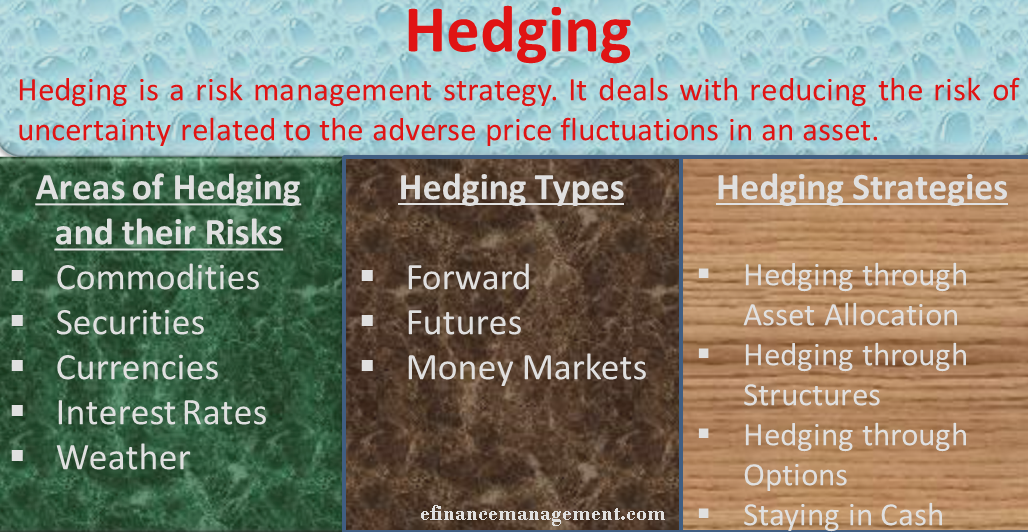Introduction
Have you ever wondered how experienced traders navigate the volatile world of options trading? The secret lies in a set of strategies known as hedging. In this comprehensive guide, we’ll delve into the world of option trading hedging strategies and help you safeguard your investments like a pro.

Image: efinancemanagement.com
Options trading offers immense profit potential but carries significant risk. Hedging, a critical risk management technique, allows you to protect your gains while minimizing potential losses. By using option trading hedging strategies, you can effectively reduce risk and position yourself for potential profit opportunities.
Understanding Option Trading Hedging
Hedging in option trading involves using multiple option contracts to offset the risk associated with a particular position. This process involves balancing opposing strategies in a way that neutralizes the impact of adverse market movements. Hedging strategies typically involve buying and selling options simultaneously to create a portfolio with reduced overall risk exposure.
Popular Hedging Strategies
Numerous hedging strategies are used in option trading, each with its strengths and weaknesses. Here are a few common options:
- Covered Call: Sell a call option against a stock you own to generate premium income while limiting potential upside.
- Protective Put: Buy a put option to hedge against potential downside risk in a stock position.
- Long Straddle: Buy both a call and a put option at the same strike price and expiration to create a range where profits can be made regardless of the direction the underlying moves.
- Iron Condor: A complex strategy involving four options contracts (two calls and two puts) to create a profit zone within a specified range.
- Collar: Combine a protective put with a covered call to limit both upside and downside risk while generating premium income.
Benefits of Hedging
- Reduced Risk: Hedging strategies mitigate risk by offsetting potential losses from adverse market movements.
- Enhanced Return-to-Risk Ratio: By reducing risk, hedging can enhance the overall return-to-risk ratio of your portfolio.
- Increased Flexibility: Hedging provides flexibility by allowing you to adjust your positions based on market conditions.
- Capital Preservation: Hedging strategies help preserve capital by protecting against severe market downturns.

Image: alltradingknowledge.com
Tips for Effective Hedging
- Understand Your Risk Tolerance: Determine your comfort level with risk to guide your hedging strategies.
- Choose Appropriate Strategies: Select hedging strategies that align with your specific risk tolerance and investment objectives.
- Monitor Market Conditions: Stay updated with market news and economic indicators to adjust your hedging strategies as needed.
- Seek Professional Advice: Consult experienced option traders or financial advisors for guidance on implementing hedging strategies.
- Practice Discipline: Stick to your hedging plan and avoid emotional decision-making that could compromise your strategy.
Option Trading Hedging Strategies Pdf
Conclusion
Option trading hedging strategies are invaluable tools for navigating the volatile market landscape. By safeguarding your investments and minimizing risk, you can position yourself for potential profits and enjoy greater peace of mind. Remember, hedging is not a guarantee against losses but rather a technique to manage risk and enhance your trading success. Implement these strategies wisely and protect your hard-earned investments like the pros do.






